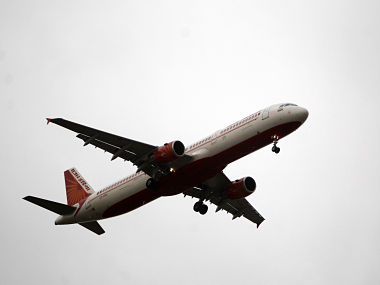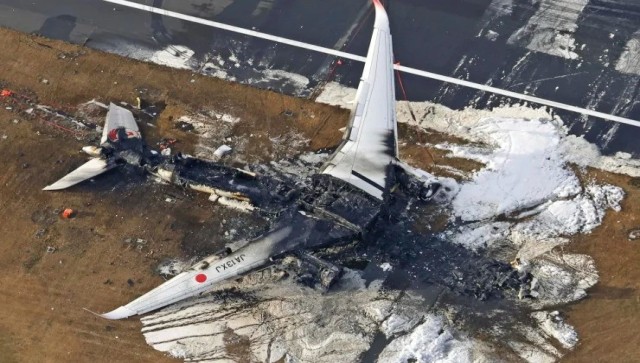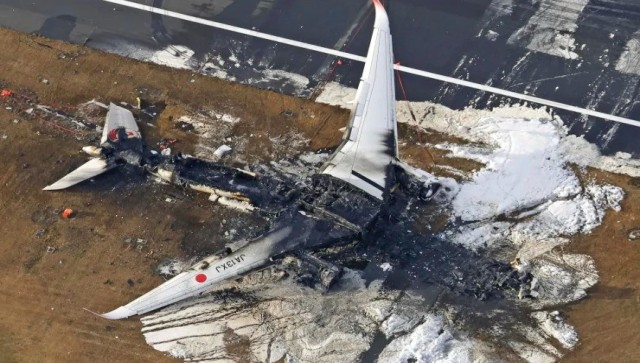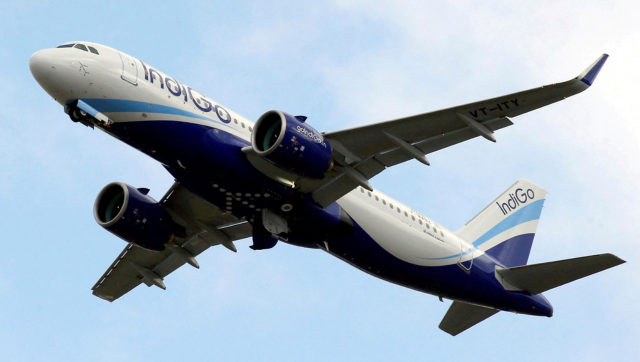New Delhi: Two statements in Parliament this week about airport infrastructure show why India remains a country of ghost airports and patchy air connectivity. We have close to 400 airports across the country which are un-served - they do not handle even a single flight. But we also lack airport infrastructure at several places where demand actually exists.
In the first statement, Civil Aviation Minister A Gajapathi Raju laid the blame at the airlines’ door and compared them to horses who can be taken near the water but cannot be made to drink it. According to him, airlines not mounting flights to many existing airports is the biggest reason for patchy air connectivity in India.
The second statement came in the form of a long list of airports run by state-owned Airports Authority of India - 86 of them - which incurred losses in 2014-15. Not all of these are un-served. In fact, the Raja Bhoj airport in Bhopal and Sri Guru Ram Dass ji airport in Amritsar, together accounted for over Rs 100 crore in losses but both these airports service flights regularly. They are not ghost airports at all.
Are airlines solely to be blamed for the unused airports and loss making ones? MoS Civil Aviation Jayant Sinha said in Rajya Sabha this week that some airports are making losses because of “low revenue generation, which is primarily due to low air traffic movements resulting in lesser aeronautical revenue, low non-aeronautical revenue potential and basic operating expenditure on account of regulatory/IATA and security requirements.”
Loss-making airports or un-served airports were built partly to pander to local politics and partly because of inability of the AAI to judge where an airport should be in a state so that airlines find it viable to operate flights there and again. This was partly done on hopes that airlines will get smaller aircraft to operate on these routes.
An AAI official had said earlier that most of the airports lying unused were built on the premise that India’s airlines, including Air India, will operate smaller aircraft. This has clearly not happened. Now, we are once again banking on airlines leveraging their balance sheets and purchasing smaller aircraft to boost regional connectivity.
In fact, the draft regional connectivity scheme (RCS) unveiled earlier this month, speaks of a complicated formula through which the Centre, states and airlines will work out viability of connecting India’s hinterland. The plan imposes fare caps while also offering viability gap funding to airlines willing to mount flights to these unviable routes and therefore infuse life into India’s ghost airports.
Civil Aviation Secretary R N Choubey has said that several small aircraft manufacturers have shown interest in India’s market after this policy draft was unveiled. The only question is: India’s airlines are still ordering larger aircraft which cannot land at many of the smaller airports. Where are the orders for smaller aircraft?
Anyhow, the regional connectivity scheme needs to iron out some other rough edges too and the government has called a meeting with all stakeholders on 29 July. Till now, not a single state government has confirmed its interest in the scheme, which proposes a specific levy on airlines departing from metro airports to fund the VGF for operating in the hinterland.
Meanwhile, an AAI official had pointed out earlier that not everywhere did AAI invested indiscriminately in creating airports where airlines would not find viability. He said Jaisalmer in Rajasthan was developed to promote tourism but Air India stopped operations in 2012. He said many of these airports have seen small investments and have been built keeping traffic potential in mind. So just Rs 30 crore was spent to refurbish Jaisalmer in 2011, just Rs 10 crore for the airport at Gondia and even airports at Cudappah in Andhra Pradesh and Bhatinda saw small investments. But still, scheduled flights remain a pipe dream at most of such airports as airlines want some support from the state government besides the right kind of aircraft to fly there.
According to an earlier Parliament reply by Minister Raju, the maximum number of ghost airports lie in Maharashtra - at Gondia (which was former Civil Aviation Minister Praful Patel’s constituency), Juhu, Kolhapur and Sholapur, Akola and Jalgaon. Rajasthan and Punjab have three each in the list, at stations such as Jaisalmer, Bhatinda, Ludhiana and Pathankot. There is a ghost airport at Shimla too, which has been in the news recently after the Supreme Court showed its displeasure at its state of affairs. Scheduled flights stopped landing at this airport since October 2012, but now the AAI says it has completed re-carpeting work on the runway and made it fit for operation of ATR aircraft.
Though these airports do not handle scheduled flights, staff has to be paid and depreciation accounted for. In 2014-15, Hyderabad’s Begumpet airport saw the highest government expenditure among all ghost airports at over Rs 67 crore, followed by Bengaluru’s HAL airport at over Rs 58 crore and Delhi’s Safdarjung Airport at almost Rs 47 crore. So over half the expenditure of the country on maintaining ghost airports was made in these three airports at Rs 172 crore. A former AAI official pointed out that Juhu incurs heavy expense as high security has to be maintained for operations of ONGC whereas Delhi’s Safdarjung airport has to be kept operational for VVIP chopper flights, for which the government pays nothing!
What India needs is a complete overhaul of its airport infrastructure. Airlines need to be incentivised to fly to ghost airports. And for functional airports which are loss making, AAI needs to explore alternative management options such as giving out operation and management contracts to private parties.
India is one of the world’s fastest growing aviation markets but domestic air connectivity remains a dream for most people residing in the hinterland. World class airports at Delhi and Mumbai, built in participation with private consortia, are not enough. States wanting enhanced connectivity must work with the Centre and the airlines to correct the anomaly.


)




)
)
)
)
)
)
)
)